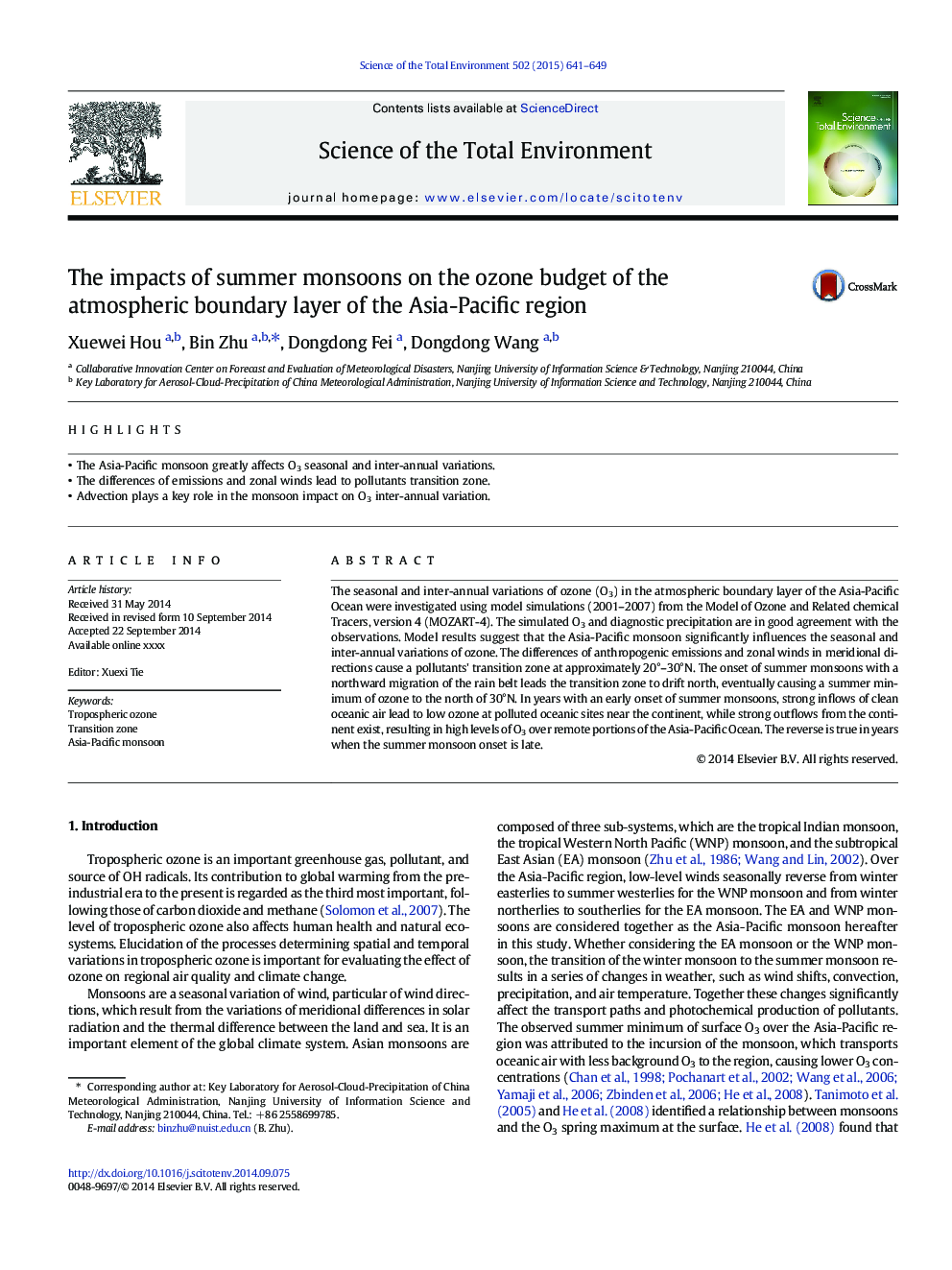| Article ID | Journal | Published Year | Pages | File Type |
|---|---|---|---|---|
| 6328570 | Science of The Total Environment | 2015 | 9 Pages |
Abstract
The seasonal and inter-annual variations of ozone (O3) in the atmospheric boundary layer of the Asia-Pacific Ocean were investigated using model simulations (2001-2007) from the Model of Ozone and Related chemical Tracers, version 4 (MOZART-4). The simulated O3 and diagnostic precipitation are in good agreement with the observations. Model results suggest that the Asia-Pacific monsoon significantly influences the seasonal and inter-annual variations of ozone. The differences of anthropogenic emissions and zonal winds in meridional directions cause a pollutants' transition zone at approximately 20°-30°N. The onset of summer monsoons with a northward migration of the rain belt leads the transition zone to drift north, eventually causing a summer minimum of ozone to the north of 30°N. In years with an early onset of summer monsoons, strong inflows of clean oceanic air lead to low ozone at polluted oceanic sites near the continent, while strong outflows from the continent exist, resulting in high levels of O3 over remote portions of the Asia-Pacific Ocean. The reverse is true in years when the summer monsoon onset is late.
Keywords
Related Topics
Life Sciences
Environmental Science
Environmental Chemistry
Authors
Xuewei Hou, Bin Zhu, Dongdong Fei, Dongdong Wang,
